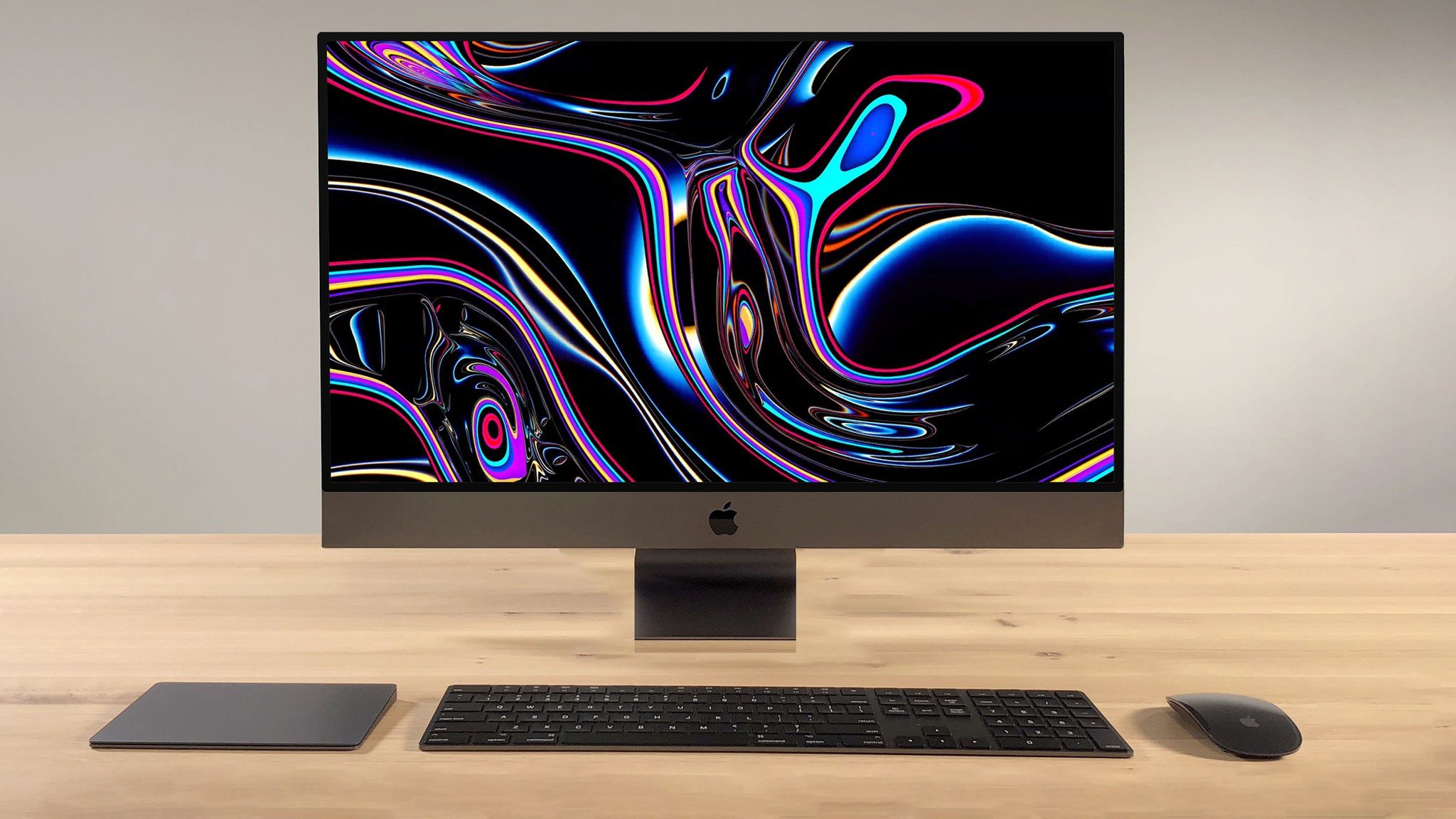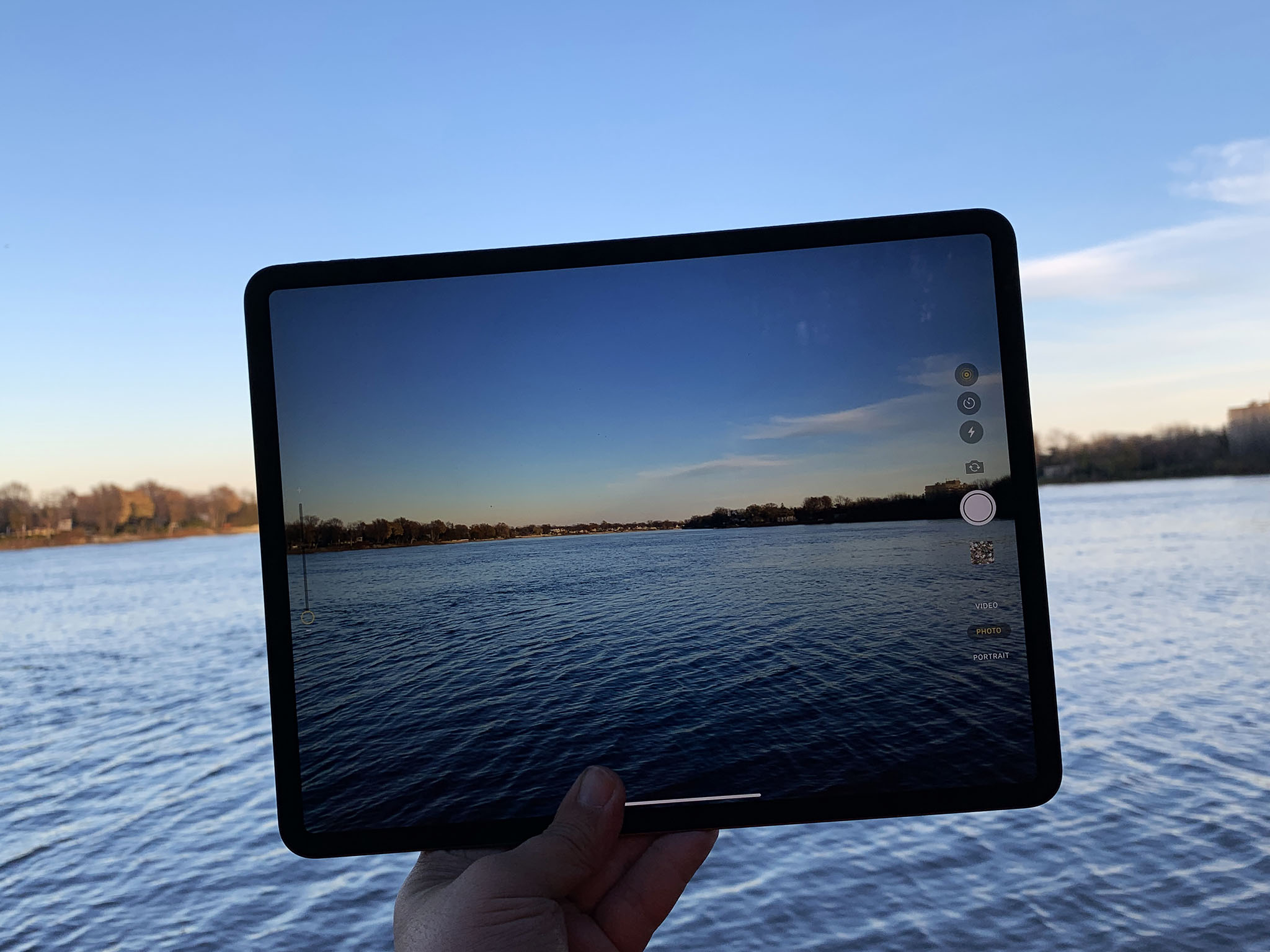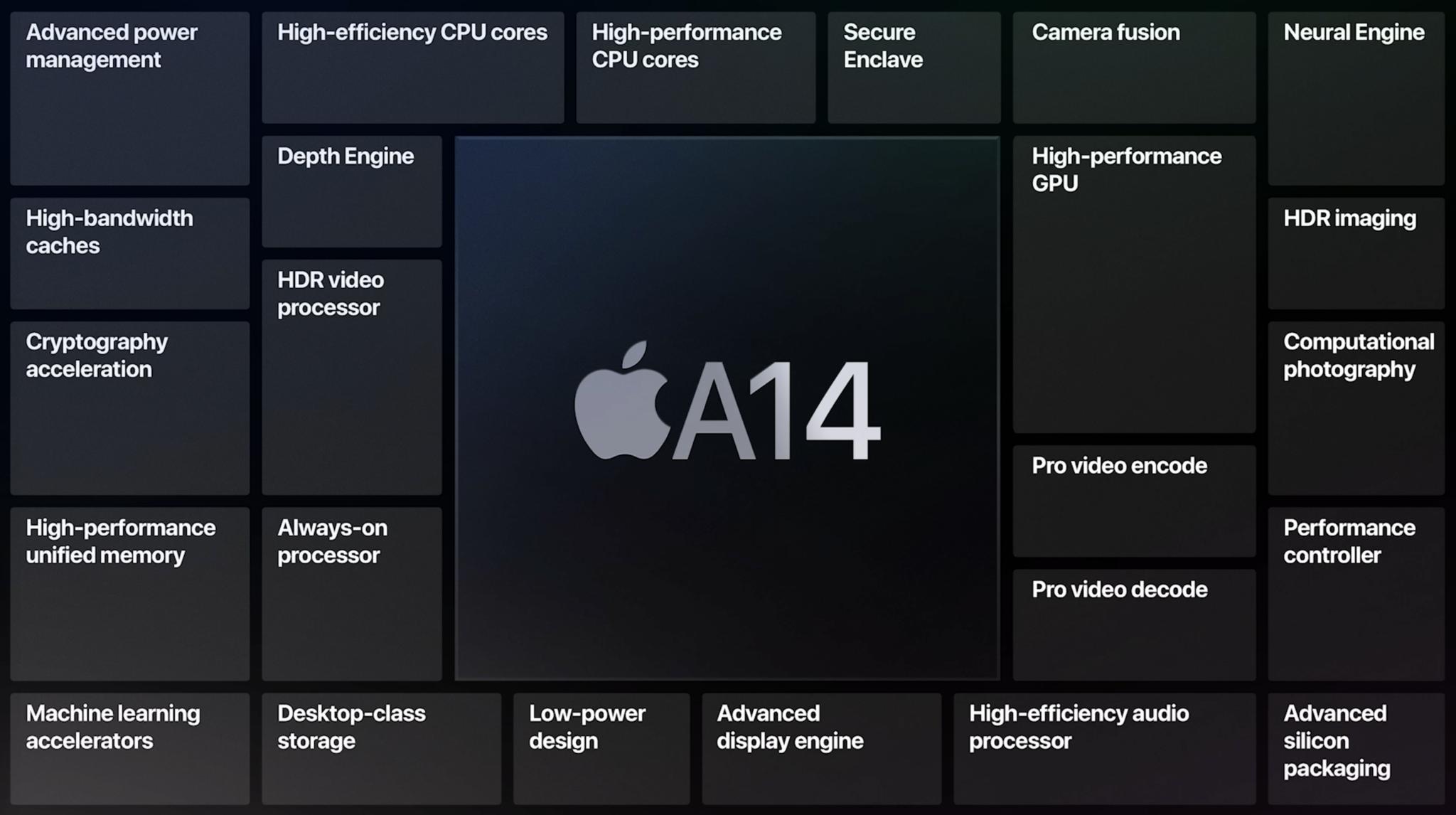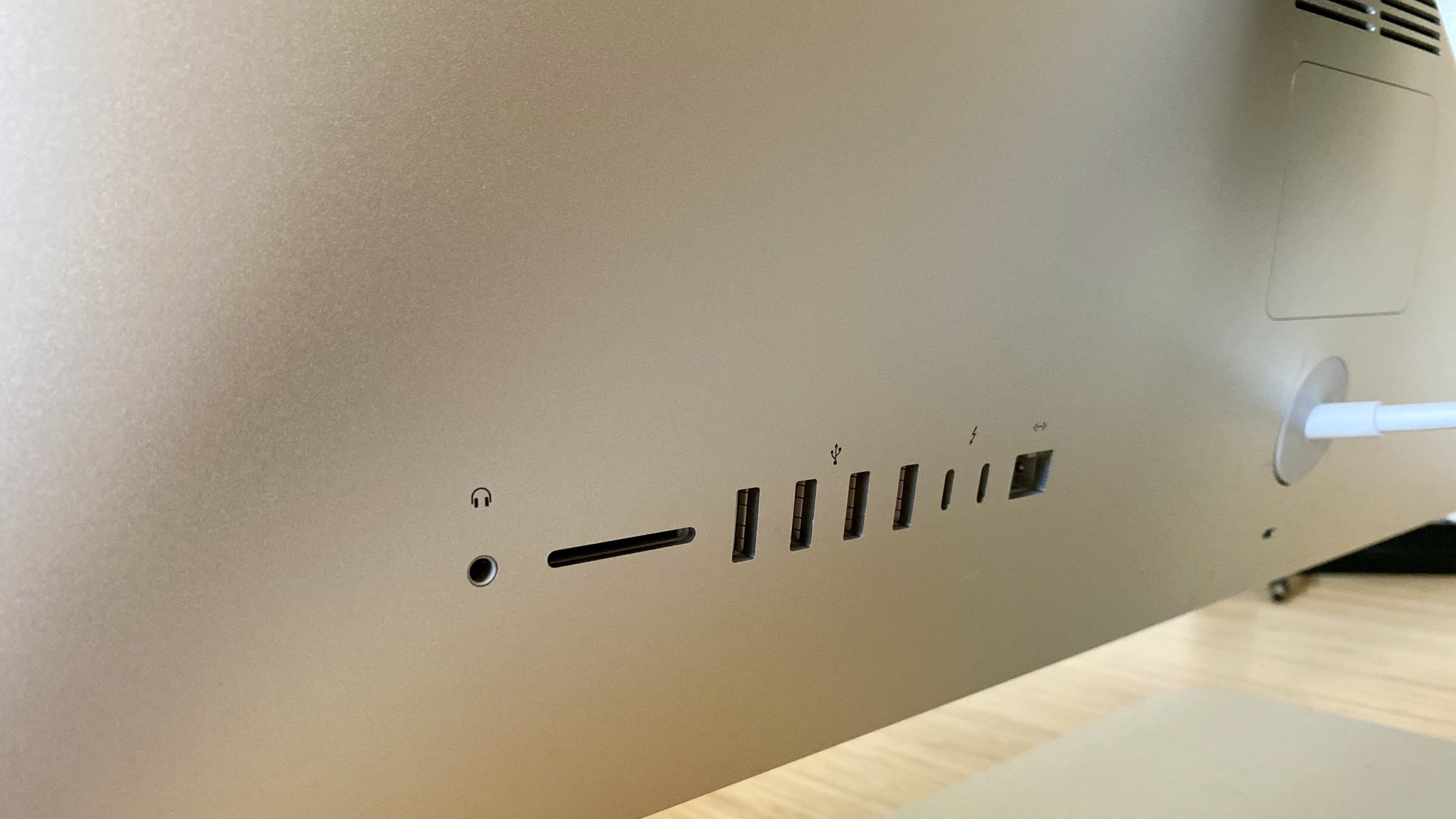Apple Silicon iMac — Imagining the ultimate all-in-one

I you think Apple Silicon is just about giving us MacBooks that are more like iPads, well then you, my friend, are 100%, completely, out-of-your-mind-palace wrong.
It's also about giving us iMacs that are more like iPads.
Wait… what?
Apple Silicon iMac Design
The first iMac from 1998, the one Steve Jobs and Jony Ive carved out of fevered dreams, survival hopes, and translucent BondhEYE blue plastic… looked like a CRT screen with a computer jammed all up inside it. Because that's exactly what it was. That was the whole point of it. Just like the original beige block Macintosh: Simplify. Simplify. Simplify. And then delete those last two simplifies because you… don't… need.. them. You just need the screen.
The second iMac from 2002 went LCD but couldn't quite fit the computer behind the thinner — at least thinner for back then — newfangled display. So, instead, Ive and company went with the far more playfully Pixar lamp-style look, and just shoved the guts down into the base.
The third iMac from 2006, though, that's when Apple landed on the still current grand design of display + chin + an L-shaped stand. Back then it was plastic and relatively squat… like an iPod, but in 2007 it went all bead-blasted aluminium… like an iPhone. In 2009, it went wide screen, in 2012, razor-edged and bubble backed, and in 2014, full-on 5K.
And, in 2020, that still what we have now. And I get it, I totally get it. On one hand, this design is just… iconic. It's the Porsche 911 excuse cliche of Porsche 911 design cliches. On the other hand, any previous desires Apple may have entertained about thinning and flattening it out again… giving it that shave and a beard-cut so many of us have been so longing for… Well, all of that was just Order 66'd by Intel's near half-a-decade of die-shrink failures, and so we've effectively been in a holding pattern… with that pattern.
Master your iPhone in minutes
iMore offers spot-on advice and guidance from our team of experts, with decades of Apple device experience to lean on. Learn more with iMore!
Until now, that is, when rumors are swirling that the iMac may finally, mother-of-all-dragons finally, be getting that iPad Pro-style make-over.
And I know, I know, that's what the rumors are saying about pretty much everything in Apple's lineup these days. From the iPhone to the MacBook to… the other iPads. Just everything is going iPad Pro.
Which, I guess, means Apple's design language is about to get real consistent real fast, or these rumors just for real lack any amount of imagination or contextual awareness.
Either way, I don't see the bead-blasted aluminium unibody and glass going away any time soon. That's all still just too foundational to Apple, and too durable for customer-type people, for it to be changed simply for the sake of change.
But I can see Apple flattening out that bubble-back again and going for something that does indeed look more futuristic and… floaty. But with some retro hard-lines to the industrial design.
Not too thin, mind you. TV may be getting damn near 2 dimensional these days, but I still want my computers to be sturdy.
Kind of exactly how the iPad Pro is on the new Magic Keyboard. Just, you know, if the keyboard were an L-shaped stand instead.
And if that appeals to you, hit the like button and lets see just how high it can go.
Apple Silicon iMac Display

The iMac has always had a bleeding edge display. It went LCD early on, then LED, IPS, just all the three letter jumbles. Most recently, it's gone 5K, for Retina-density resolution, DCI-P3 for wide gamut color, TrueTone for ambient color temperature matching, and even gotten a nano-texture option to reduced glare while maintaining contrast.
In other words, year over year, for as little as Apple has changed the window frame, wow but have they improved the view.
The next obvious step is still wicked obvious though: Thanos-snap those bezels. Just delete them by half. At least. Do, literally, what Apple has done to the iPad Pro, just instead of leaving no country for old Home buttons, leave nothing for the logo.
I mean, if iOS devices and even MacBooks can put the logo on the non-distracting back, so absolutely can the iMac.
Rumor also has it that Apple's planning to increase the size of the current 4K iMac from 21.5-inches to 24-inches and from 27-inches to 30-inches.
Which would be… immersive to the point of enthralling… Provided your workspace could handle it. 30-inches is the current size of the Pro Display XDR and, hey, I'm not just all for it, I'm all about. The whole point of an iMac is to have the biggest Apple display possible… so just give us exactly that. The biggest Apple display possible. That way even our windows can have windows.
And if it takes 6K to keep it Retina, like the Pro Display, well, that's just a sacrifice I think many of us are more than willing to make.
Now, the next rumor is where it gets really exciting: mini-LED.
Yeah, not OLED. OLED has issues that can be mitigated on static refresh rate phones and TVs, but just don't seem able to be worked around with the kind of dynamic refresh rates and color management Apple wants on their panels. At least not yet.
But mini-LED…. Mini-LED has a number of the same advantages as OLED but without some of those drawbacks.
Basically, it uses like 10,000 tiny, 200 micron LEDs, grouped into local dimming zones, so it can get closer to those deep, inky blacks, giving it contrast ratios similar to OLED, but without the burn-in, off-axis color shifts, and white point changes that just stack up on OLED.
It also might allow for adaptive refresh rates, what Apple calls ProMotion on the iPad Pro. That's what lets the display ramp up to 120Hz for silky smooth scrolling and brain-bending gaming, but also ramp way down to 48Hz, even 24Hz for things like accurately presenting 24 frames-per-second content in Final Cut Pro and TV+.
What I'm not so sure about is peak or sustained brightness levels. Apple is delivering that to extreme dynamic range with the Pro Display XDR, which is still LED, but they have to drive a fan-fueled cooling system to do it. And at that point, you might as well still be using Intel.
Now, if there's an iMac Pro SKU that wants to go XDR, I'd be all for it. Because I'm all about high-end options on top. But for the regular iMac, I think nice, quiet HDR would be blissfully good enough.
And by good enough, I mean the instant I look at it I'll know I want to just move in and live inside it.
Could target display mode come back, where you plug your MacBook into your iMac and just use it like a ginormous monitor? I honestly don't know. It originally went away because Apple had to work around Intel's lack of 5K bandwidth support by building their own custom timing controller, essentially stitching two display streams together. And that only worked internally. I'm hoping, once Apple controls the whole stack, they can bring it all back, innie and outie, but I have no idea how easy or how high up the priority list that may be.
Same with multitouch and Apple Pencil support. I mean, I want it. Bad. I came up as an artist and designer and the Surface Studio still makes me drool.
But like anything when it comes to multitouch Macs, I'll expect it only when I see it. Let me know how you feel in the comments.
Apple Silicon iMac Chipset

The latest iMac is also the last Intel iMac, and it's chocked full of 10th generation comet lake cores… that aren't much faster one-to-one than 9th generation cores, but do offer to ramp the core count from 8 to 10 to make up for it. In terms of performance, not efficiency, of course.
Like with the MacBook Pro, I imagine the iMac was designed with Intel actually maintaining their tick-tock schedule in mind. But, since Intel is still in stuck in a tick-tock-tock-tock-optimize-optimize-optimize hell, and at 14 nanometer for the desktop, Apple is moving on to their own, custom silicon.
Which… could not only debut with the new ARMv9 instruction set architecture, or ISA, but on Taiwan Semiconductors new 5 nanometer process as well.
I've done a few deep dives on what exactly that means for the Mac, so check out the links in the description.
Apple's head of platform technologies, Johny Srouji, has said there'll be a family of SoCs — of systems-on-a-chip. That means, instead of having a CPU, GPU, RAM, and all the other base computing components all laid out on a motherboard like a platter, it has them all stacked together on a single die… like a sandwich.
How Apple scales their currently all-mobile SoCs to full-on iMac-style desktop class silicon is going to be really interesting to see.
So is how things like user-accessible memory modules will be handled in a world where they're not just welded onto the board but actually fabbed into the chip.
Maybe that just goes away… or maybe Apple makes some kind of ultra-high-speed expander system, like the modules they've been making for the Mac Pro.
Same with discrete graphics cards. With a GPU on the chip, is there room for AMD-style options… or thing like the Afterburner accelerator card. A reprogrammable ASIC that could make the iMac even more focused on ProRes video or audio or whatever any creative or pro wants it to be?
Or could Apple make an iMac SoC for consumers and an even more powerful iMac Pro SoC… for Pros… to better cater to both ends of the market?
You know, the first without fans, so it's whisper quiet for those who want ultimate stealth, and the second with fans, so it's ultra cool for those who want maximum sustained power?
I have so many questions. Let me know what you want the answers to be… in the comments below.
Apple Silicon iMac Security
The MacBook Pro got a T1 chip and Touch ID four years ago. Just this month the iMac got a T2 chip… but still no Touch ID.
And, actually, that makes the sense that kinda does… I think? I mean, at least if you want to keep everything secured through a hardware channel.
Because the T2 chip is inside the computer, not the keyboard, and that's what handles checking the mathed-out Touch ID data against the mathed-out data from your registered fingerprint before releasing an authentication token.
So, if you want to keep that all local, you'd still need the T2 chip in the computer to handle all the encryption, acceleration, and component controllers, and at least a T1 in the keyboard to handle Touch ID…
T2 being the equivalent of an iPhone 7 chip and T1 an Apple Watch 2 chip. Which, wouldn't just make for a lot of redundancy… it would make for a more expensive keyboard.
And buying and replacing more keyboards that are more expensive just because they have secure elements inside them and not for any justifiable reason… like I don't know… they're space gray… would suck.
But you know what wouldn't suck… and would very neatly solve this exact problem at the same time? Right, Face ID.
We already don't need a T2 chip in the computer, like at all anymore, because the new Apple Silicon SoC will include all the Secure Enclave you could ever want, plus an ANE or Apple Neural Engine to handle the neural networks necessary for Face ID.
And because it uses a TrueDepth camera mounted above the screen instead of a capacity fingerprint sensor on the keyboard, we wouldn't have to include any extra tech in the keyboard either.
Would it be faster than unlock with the Apple Watch's proximity based system? I mean, race you for it. But you wouldn't have to own an Apple Watch and it wouldn't unlock when you just walked past it. Only when you look intently at it.
And that's a huge win/win for me.
Apple Silicon iMac WiFi 6
Apple's been avoiding WiFi 6 on the Mac line, which is weird given how fast they adopted it on the iPhone and iPad. There have been issues with WiFi6 in the past, though, so it's possible Apple's been waiting on their own custom silicon before bringing it to the Mac. So, hopefully, this gives us that.
I'd also love to see a U1 chip. Not because I think I'll be carrying around my iMac around to find my iPhone or AirTagged keys or anything, but because it'd allow me to specifically target it for AirDrop.
And, if Apple could combine Bluetooth, WiFi6, and U1 and make an even faster, like run, Barry run, speed force faster, version of AirDrop… well I'd love that even harder.
Apple Silicon iMac Ports

An iMac can be many things to many different people. A front-of-house centerpiece for a shop, a workstation for creatives or studios, a hub for families. But all of those things typically require ports.
The current Intel iMac has 3.5mm headphone, SDXC, 4 times USB-A, 2 times USB-C / Thunderbolt 3, and ethernet. And, honestly, I wouldn't change a thing.
Kidding. USB-C should go to USB4 and Thunderbolt 4, and I think it's time for 4 of those. Let USB A drop down to 2.
If you have other ideas, though, let me know.
Apple Silicon iMac Keyboard & Mouse
I don't think the Magic Keyboard or Magic Trackpad are in urgent need of update. I know some people really like the Touch Bar on the MacBook Pro — yeah, they really do — and want it on the iMac and Mac Pro keyboard as well. And, if Apple really believes it's the better touch future for the Mac, well, they should have had it here 3 years ago at the latest. So, aside from the same cost-factor drawback as Touch ID on the keyboard, it's just really hard to read Apple on that specific tech.
The Magic Mouse, though, I think is way long past overdue on a makeover.
When Apple first switched it from batteries to rechargeable, but just stuck the port right over where they swapped the batteries for the battery, it was like, fine, whatever, short term solution. But it's been 5 years now.
And it's not that it looks silly charging like an upside down turtle, it's that you can't use it when it's charging or when it's plugged in because you simply prefer not to use it wireless… like you've always been able to do with the Magic Keyboard and Magic Trackpad.
Apple Silicon can't fix that, of course. But Apple Industrial Design and hardware engineering can.
Apple Silicon iMac Audio/Video
The latest Intel iMac gives the old potato of a camera a serious tater-tot-level upgrade. It's 1080p now, back illuminated, and computationally enhanced by the T2 chip's image signal processor. That's equivalent to iPhone 7. I imagine even the first Apple Silicon iMac will have an ISP closer to the iPhone 12 or iPhone 13. Which should make it damn near terrific. Like poutine.
But really, it should be as good an iPad or iPhone, and if there's ever a new ASi iMac Pro, that should be 4K at least. We use these computers for production, let us produce.
For speakers, the 16-inch MacBook Pro already shows the way forward. Because the iMac doesn't sit on a table and isn't relatively narrow, like the MacBook Pro, it won't need to do things in the same way, like force-canceling the woofers or computationally spacing out the sound stage. But the end result should be the same: Like Apple flattened out a HomePod and shoved it inside the casing. Or, like, you have a Dolby Atmos theater system projecting from the display.
Apple Silicon iMac Pricing
Spoiler alert: Apple sells way more iOS devices than Macs, and way more MacBooks than Mac desktops. Of the Mac desktops that Apple sells, though, the iMac is by far the most popular.
So, while I don't expect the iMac to get priority over the MacBooks in terms of when it comes to market, I do expect it to keep pace in terms of how it fits into the market.
What I mean by that is, I think at first prices will stay about the same. Whatever Apple saves on Intel chips will be spent paying down Apple Silicon chips and adding new technology, like I'm very much hoping TrueDepth cameras for Face ID.
But, over time, I'm hoping Apple will follow the same strategy they've been using with iOS devices — let that paid down technology drive down prices on entry level machines.
Let the latest iMacs and iMac Pros be greatest, like the iPhone 12 and iPhone 12 Pro, or the iPad Pro, but then let those same parts be repackaged later into the iMac equivalent of the iPhone SE or 10.2-inch iPad.
That's how and where I see Apple maintaining their ASP, their average selling price, but expanding the market at the same time, both for pros and for the massive mainstream.
What about you?

Rene Ritchie is one of the most respected Apple analysts in the business, reaching a combined audience of over 40 million readers a month. His YouTube channel, Vector, has over 90 thousand subscribers and 14 million views and his podcasts, including Debug, have been downloaded over 20 million times. He also regularly co-hosts MacBreak Weekly for the TWiT network and co-hosted CES Live! and Talk Mobile. Based in Montreal, Rene is a former director of product marketing, web developer, and graphic designer. He's authored several books and appeared on numerous television and radio segments to discuss Apple and the technology industry. When not working, he likes to cook, grapple, and spend time with his friends and family.
